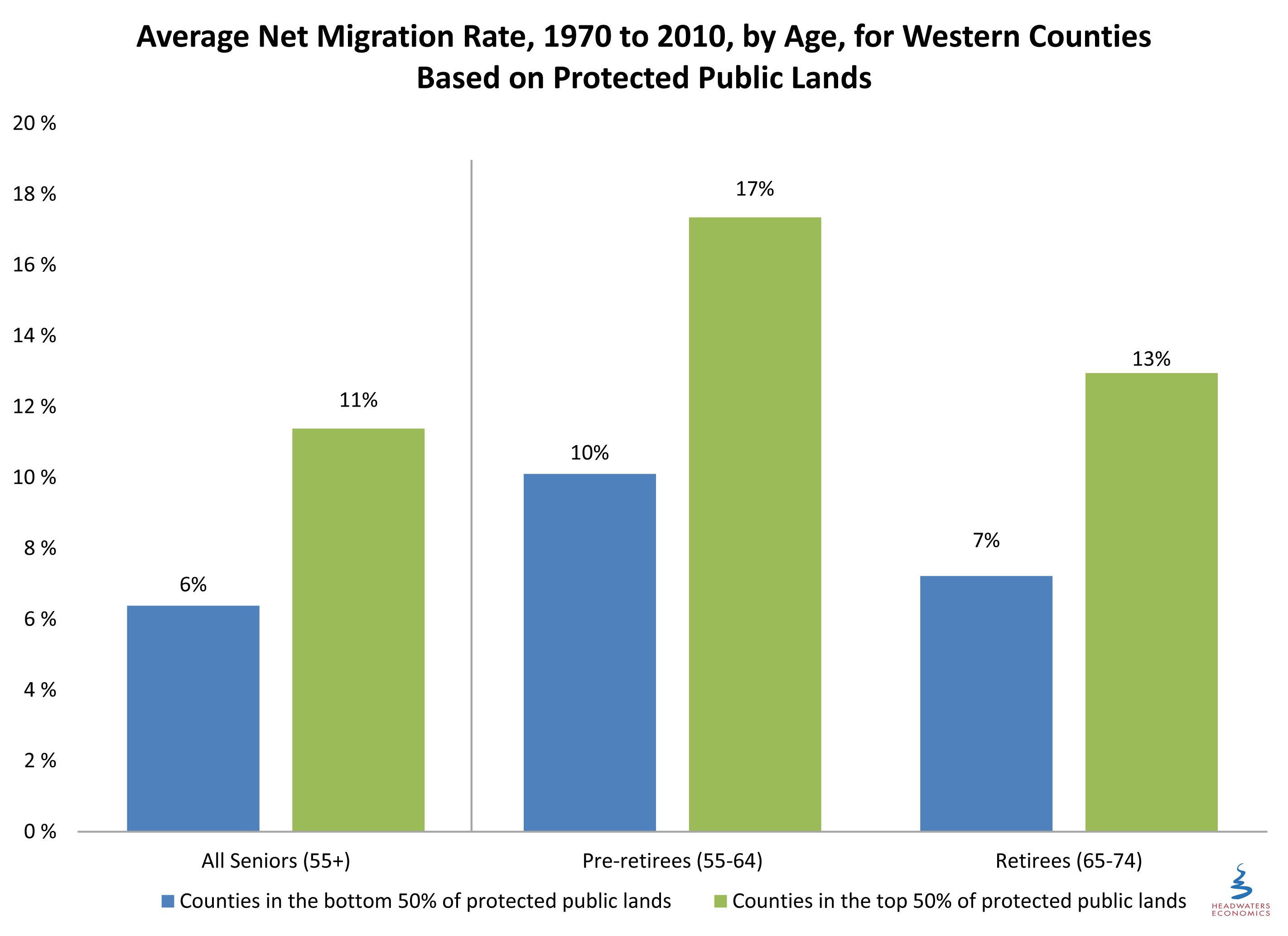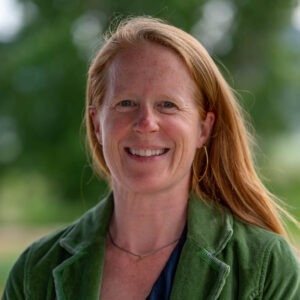This chart shows the difference in migration rates between counties with low and high levels of protected public lands during the past 40 years for three different age groups: all seniors 55 and older, those 55-64 or “pre-retirees”, and retirees aged 65-74. [These patterns also hold for each decade.]
The difference in migration is greatest for pre-retirees, who are likely to be active and enjoy outdoor recreation on these lands. The difference in net migration is smaller for older retirees, but is still significantly higher in counties with high protected public lands.
Previous research by Headwaters Economics has shown that protected public lands help to create a competitive economic advantage, contributing to growth in employment, population, and personal income.
Migrating baby boomers provide a unique economic stimulus, bringing along with them an influx of retirement and investment income. This income can then boost other parts of the economy, including the health care and retail sectors.
Analysis Details:
This analysis uses estimates of county-level net migration, the difference between in-migration and out-migration, by decade from 1970-2010. The estimates are based on U.S. Census counts, and account for births, deaths, and aging during the decade. Net migration rate is the number of additional residents in a given age group due solely to migration between 1970 and 2010, divided by the total number of residents in that same group in 2010.
Data Sources:
Fuguitt, Glenn V., Calvin L. Beale, and Paul R. Voss. County-Specific Net Migration Estimates, 1980-1990 [United States]. ICPSR26761-v1. Ann Arbor, MI: Inter-university Consortium for Political and Social Research [distributor], 2010-04-02.
U.S. Geological Survey, Gap Analysis Program. 2012. Protected Areas Database of the United States (PADUS) version 1.3.
Voss, Paul R., Scott McNiven, Roger B. Hammer, Kenneth M. Johnson, and Glenn V. Fuguitt.County-Specific Net Migration by Five-Year Age Groups, Hispanic Origin, Race, and Sex, 1990-2000: [United States]. ICPSR04171-v1. Ann Arbor, MI: Inter-university Consortium for Political and Social Research [distributor], 2005-05-23.
Voss, Paul, Richelle Winkler, Cheng Cheng, Kenneth Johnson, and Katherine Curtis. County-Specific Net Migration by Five-Year Age Groups, Hispanic Origin, Race and Sex: 2000-2010. ICPSR34638-v1. Ann Arbor, MI: Inter-university Consortium for Political and Social Research [distributor], 2013-09-05.
White, Michael J., Peter Mueser, and Joseph P. Tierney. Net Migration of the Population of the United States by Age, Race and Sex, 1970-1980. ICPSR08697-v1. Ann Arbor, MI: Inter-university Consortium for Political and Social Research [distributor], 1987.

